Smoking a brisket can take up to 1 hour and 15 minutes per pound. But there’s more to it than simply the weight of the brisket. Smoking a brisket is a labor of love that takes time, patience, and a bit of knowledge.
As a formally trained chef with years of experience smoking brisket, I know the cooking process is just as necessary as the result. This article will explore the details of smoking a brisket at 250 degrees. You’ll discover nuances such as the cooking time, internal temperature, and the best techniques for achieving juicy and tender meat. So let’s get started.
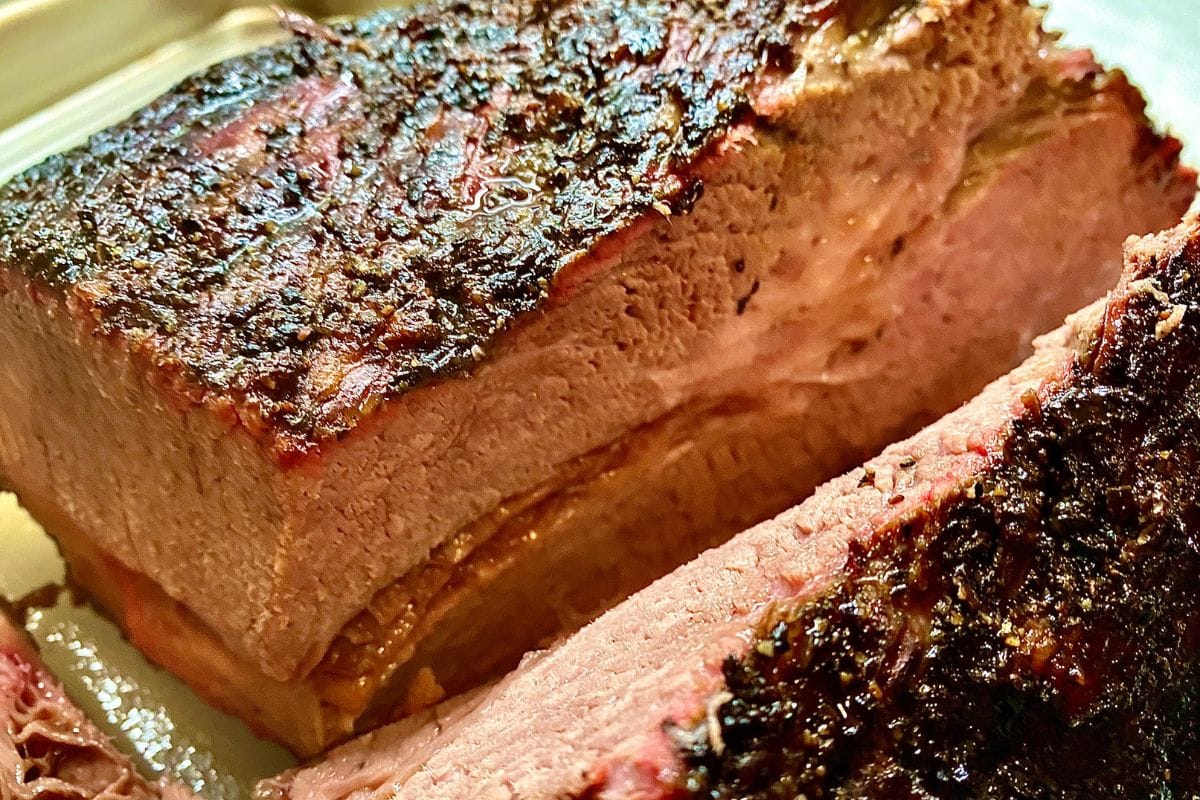
Plan for about 1 hour and 15 minutes of smoking time per pound of beef brisket. For example, a 10-pound brisket would take roughly 12.5 hours to smoke at 250 degrees.
But the answer is not simple to work out on a calculator. It actually depends on factors such as the weight of your beef brisket and your desired level of doneness.
The process to cook brisket is a slow one. So be prepared to spend some time by the smoker. The good news is that smoking a brisket at 250 degrees is a sweet spot that provides the ideal balance of flavor and tender, juicy meat.
Smoking brisket at 250 is a form of art. And there’s more to it than just setting a timer and walking away.
Several factors can affect the time your brisket takes to cook. So it’s essential to keep an eye on your meat and make adjustments along the way.
One of the most critical factors that can affect cooking time is the weight of your brisket. A 6-pound brisket cooks much faster than a 14-pound brisket at the same temperature.
In addition, it takes longer to smoke brisket that is thicker than a thinner one.
There are two main types of beef brisket: the flat and the point cut.
The point cut is usually thicker and contains a thick fat cap. This is why it can take longer to smoke brisket taken from the point than a flat-cut brisket.
Logically, whole packer briskets, which include both the point and the flat, will take longer to cook than a flat or point-only brisket.
The level of doneness you want for your brisket will also affect the cooking time.
It will take longer to cook if you prefer a more tender and juicy brisket.
However, if you like a firmer and drier brisket, cooking will take less time.
When your brisket reaches around 165 degrees Fahrenheit, it enters what is known as the stall. This is caused by the evaporation of liquid on the meat’s surface.
During this phase, the meat stops cooking and takes several hours to break through. This can add additional time to the process by which you cook brisket.
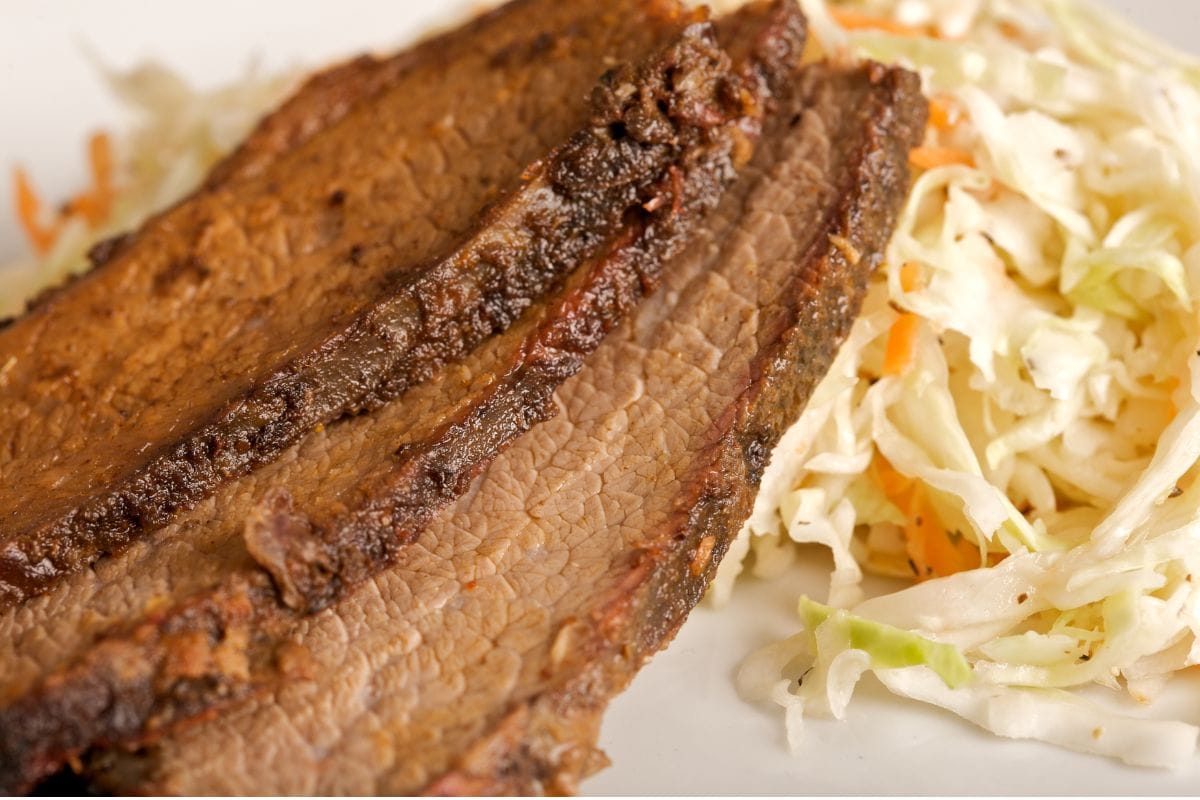
Meat keeps cooking throughout the resting time after being off the smoker.
So, based on this premise, I like to stop the smoker when the meat is around 3 to 5 degrees Fahrenheit close to the targeted doneness level. 195 degrees is the point where you get perfect juicy meat. So, I stop cooking at around 192 degrees.
The remaining three degrees are expected to add up while resting.
The resting time saves you some minutes of cooking and the possibility of overcooking or drying out your meat.
In addition, this resting time allows the juices to redistribute throughout the meat. So, it makes for a more tender result.
After smoking your brisket, it’s essential to let it rest before slicing. Plan on resting your brisket for at least 30 minutes before cutting.
Extra Tip: You should also avoid opening the smoker too frequently. This can cause fluctuations in temperature and extend the time it takes.
Related Reading
Smoking brisket involves slow-cooking the meat over low temperatures and wood smoke until it’s tender and juicy.
The process can take anywhere from 8 to 16 hours, depending on the size and thickness of the brisket.
The wood smoke adds a rich flavor to the meat, and the slow cooking process breaks down the connective tissues in the meat, making it tender and easy to slice.
The process begins, of course, with preparing the brisket. Then, you need to add the rub, smoke openly and then wrap in a foil. Then unwrap in the last 30 minutes of cooking.
Before smoking, trim any excess fat and apply your favorite rub. This step will ensure that the brisket absorbs all the delicious smoke and spices.
Once you have your brisket prepped, it’s time to start smoking. The goal is to slowly cook the meat at low temperatures ranging from 225 to 250 degrees while infusing it with a rich smoky flavor.
This low and slow method of cooking allows the meat to retain moisture, cook evenly, and become tender. This cooking method enables the smoke to penetrate the meat more slowly, resulting in a more robust smoky flavor.
Finally, smoking at lower temperatures for a longer period will create a beautiful bark on the outside of the brisket, adding a delightful crunch to every bite.
After the brisket has smoked to your desired level of flavor, wrap it in foil or paper. Then continue cooking until it reaches the ideal internal temperature.
I prefer using foil as it creates a tighter seal. This helps retain the brisket’s moisture and tender texture. Butcher paper, on the other hand, allows for some airflow. It creates a bark that many pitmasters love. Ultimately, it comes down to personal preference.
Wrapping the brisket also helps to speed up the cooking and avoid overcooking. The foil or paper acts as a barrier. It traps the heat and moisture around the brisket. This then results in a more even and controlled cooking environment.
But it’s important to note that wrapped brisket often has softened bark. So, you won’t have a crispy outer layer which is the seasoned fat that forms at the back. To avoid this, I like to remove the brisket from the foil or paper for the last 30 minutes or so of cooking to allow the bark to re-crisp.
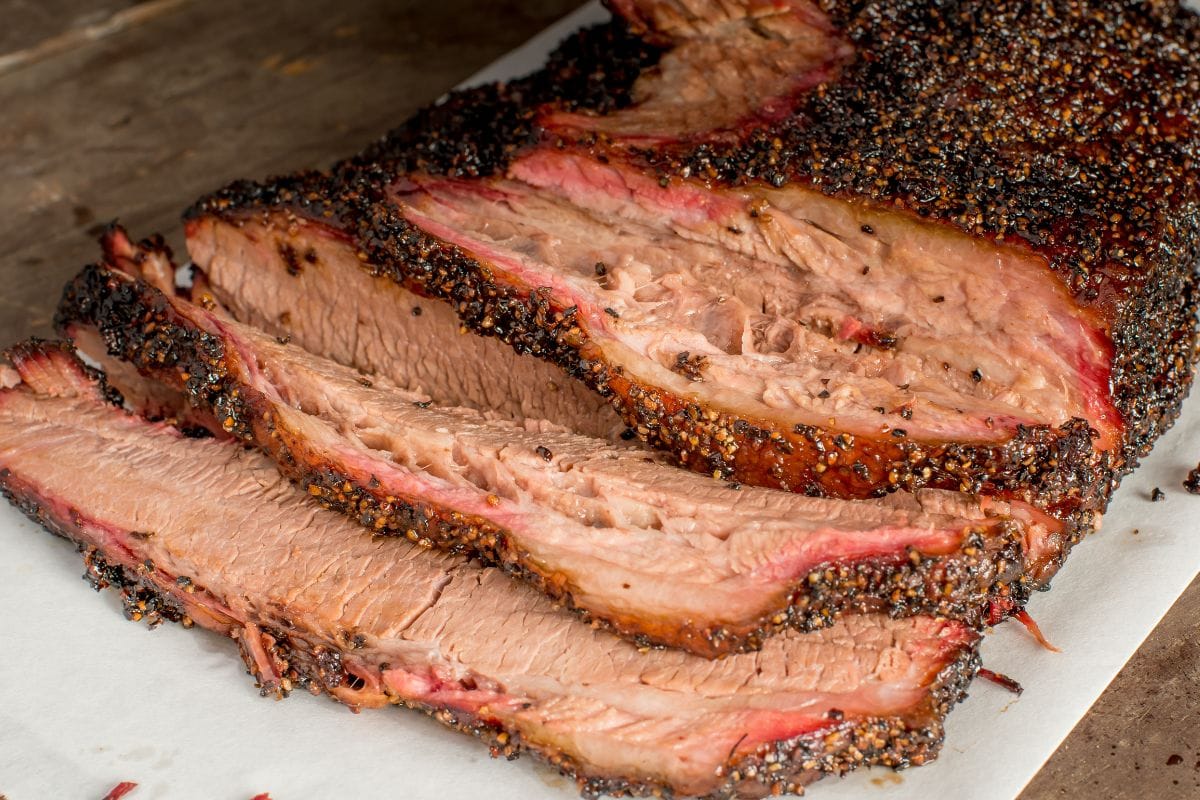
The type of beef brisket you choose can affect how long it takes to smoke. Here are some general guidelines to keep in mind:
A full packer of beef brisket is a large, fatty cut. So, it requires a longer cooking time to break down the fat and become tender.
The flat is a leaner cut of brisket that needs a shorter time than a whole packer.
Point-cut brisket is quite fatty. It requires a longer time to cook than flat-cut brisket, but not as long as a packer.
One of the keys to a perfectly smoked brisket is monitoring its internal temperature. This is important because it indicates when the brisket is fully cooked and ready to be removed from the smoker.
Keeping a watchful eye on the internal temp of your brisket is essential to ensure it is cooked perfectly and safe for consumption. You don’t want to serve undercooked or overcooked meat to your guests, right?
Knowing the ideal internal temperature for your specific cut of meat is the key to achieving a juicy and tender brisket that will melt in your mouth.
In the case of brisket, the temperature you aim for will make all the difference between a dry, tough, and disappointing outcome or a perfectly cooked brisket that will have your guests raving. So, let’s dive into the best ways to monitor your meat’s doneness level.
The most accurate way to monitor the temperature of your meat is by using a thermometer.
There are two types of meat thermometers that you can use: a probe thermometer or an instant-read thermometer.
Both types of thermometers are just as effective. But a probe thermometer, also known as a meat probe, is the most convenient because it can be left in while the brisket cooks. Thankfully, probe thermometers come with some modern smokers like the CampChef SmokePro
Meanwhile, you won’t find this in classic smokers like the offset smoker. In this case, you can get an instant-read thermometer like the Alpha Grillers one for $10 to $20.
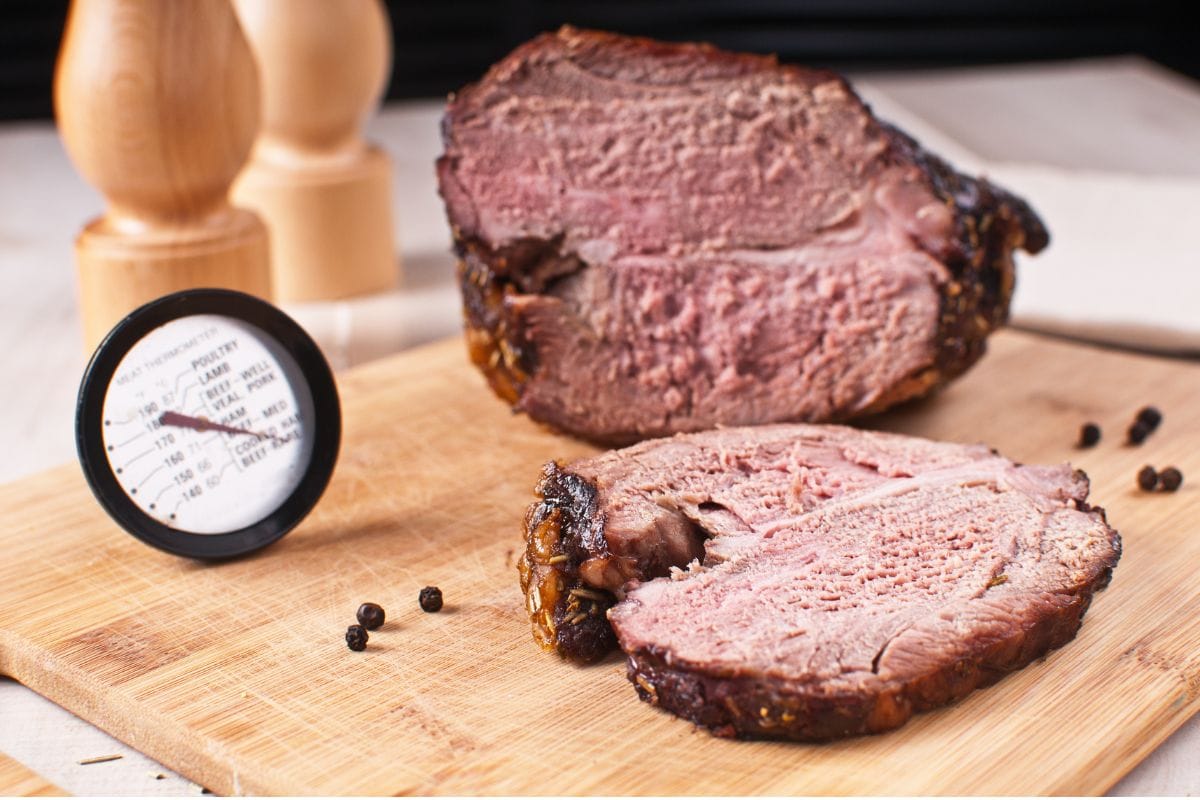
The perfect temperature for a properly smoked brisket is around 195°F (90°C). You can use a thermometer to check different parts of the brisket to ensure it is cooked evenly. At this temperature, the connective tissue in the meat will break down, resulting in a tender and juicy brisket.
However, remember that briskets can still be tender and juicy even if slightly under or over this temperature.
Meanwhile, overcooking or undercooking your brisket can result in a tough and dry brisket. To avoid this, monitor your brisket’s internal temp regularly, especially as it gets closer to the ideal temperature range.
Once your brisket is around 20 to 30 minutes shy of the ideal temperature, remove it from the smoker. Then, let it rest for at least 30 minutes before slicing and serving.
If you’re a fan of smoked brisket, then you know that the smoky flavor makes it stand out from other types of cooked meat. Achieving that perfect smoky flavor can be a bit of a challenge. But with the proper techniques, it is definitely achievable.
Firstly, you’ll want to choose the right wood for smoking. Different types of wood can provide different flavors. And it’s essential to find the one that works best for your tastes. Some popular choices include oak, hickory, and mesquite.
If you don’t use enough wood, your brisket won’t absorb enough smoke flavor. On the other hand, using too much wood risks over-smoking the meat, resulting in a bitter taste.
Another tip for achieving a smoky flavor is smoking the brisket at a lower temperature. This will give the meat more time to absorb the flavor, resulting in a more intense smoky taste.
Once you’ve achieved the desired level of smokiness, you can increase the temperature to finish cooking the brisket.
Finally, you can also try coating the brisket generously in a dry rub or soak it in a marinade. This will allow the brisket to soak in smoke and add more flavor to the meat. A rub or marinade ingredient can include spices, herbs, beer, or wine. Just be sure to use a rub or marinade that complements the smoky flavor rather than overpowering it.
In my experience, both temperatures can yield delicious brisket. Smoking at 225 degrees can take longer but can result in a more tender and flavorful brisket. However, smoking at 250 degrees is faster and still produces a tasty brisket. Choosing between the two temperatures depends on personal preference and time constraints.
On average, a 14 lb brisket that is smoked at 250 degrees Fahrenheit will take 15 to 17.5 hours to reach the desired internal temperature of 195 degrees Fahrenheit. Remember to take the brisket off the smoker 30 minutes before the calculated time. Then let the brisket rest before slicing to help retain moisture and flavor.
Typically, a 12 lb brisket smoked at 250 degrees Fahrenheit can take 13 to 15 hours. However, the time may vary based on factors such as the specific cut of brisket, smoker temperature, and desired level of doneness.
Smoking a 6-pound brisket at 225 degrees Fahrenheit typically takes 8 to 10 hours. Monitoring the internal temperature using a meat probe ensures the brisket is fully cooked and tender.
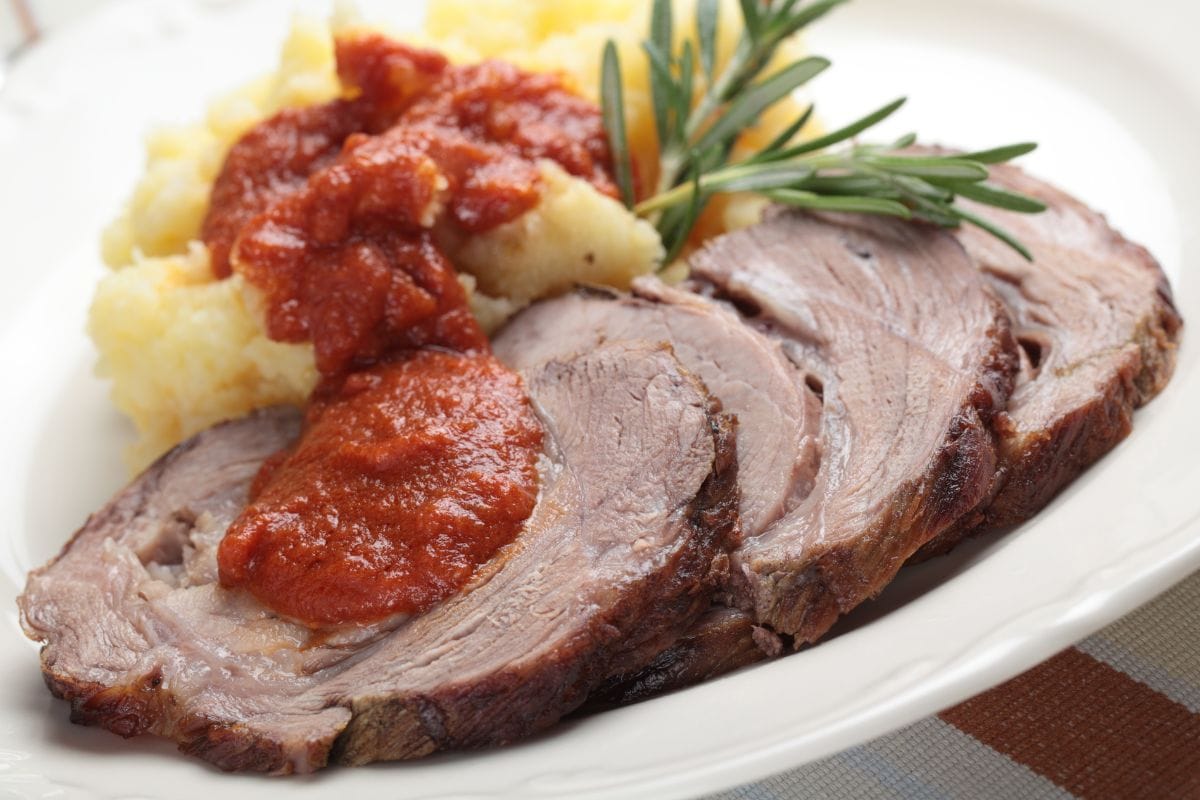
Smoking a brisket at 250 degrees Fahrenheit requires patience and precision. The cook time for smoking brisket at this temperature can range from 8 to 16 hours. It depends on the size and thickness of your brisket. Make sure the internal temperature of the meat reaches at least 195 degrees Fahrenheit, so it’s fully cooked and tender.
Monitoring the smoking process and ensuring the brisket is safe to eat is quite important. Resting the brisket for at least 30 minutes after cooking helps the meat retain its juices and produces a juicy and flavorful brisket. You may want to use aluminum foil or butcher paper to wrap the brisket during the process for a tender and juicy result. With practice and attention to detail, anyone can master the art of smoking brisket at 250 degrees Fahrenheit and enjoy this mouthwatering dish time and time again.
Remember, cooking brisket is a process, so be patient and make adjustments as needed. The result will be worth it!